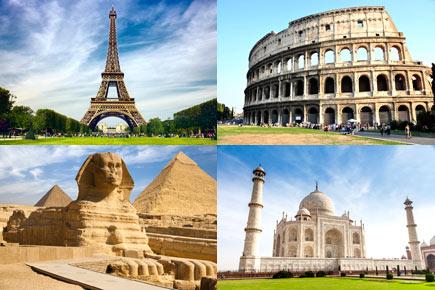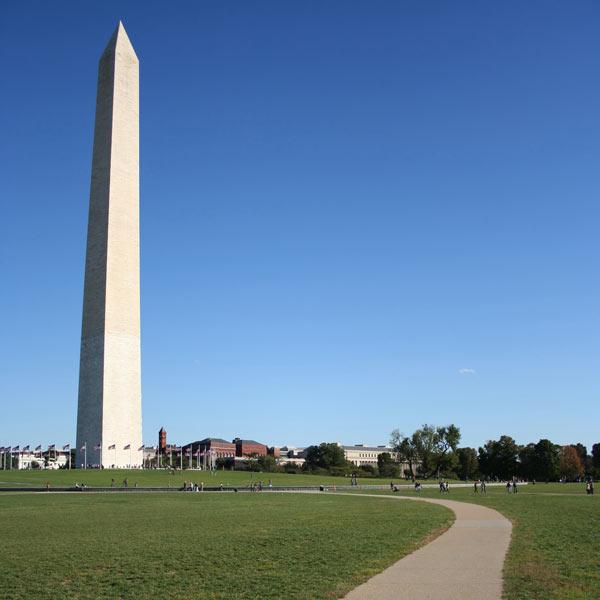On January 3rd, today in 1956, the top part of the iconic Eiffel Tower in Paris, France was damaged due to a major fire...

On January 3rd, today in 1956, the top part of the iconic Eiffel Tower in Paris, France was damaged due to a major fire.

ADVERTISEMENT
The blaze, which started in the television transmitter damaged the top of the Gustave Eiffel creation leading to year long repairs that were completed a year later. We look at other famous landmarks that were damaged by natural and man made circumstances...
Washington Monument: A magnitude 5.8 earthquake struck near Washington, D.C. in 2011 causing extensive structural damage to the monument, which required it to be closed to the public.

Several marble panels that adorned the outside of the structure were broken as a result of the quake, particularly at the pyramid section, revealed reports. Furthermore, vertical supports that ran inside the monument cracked, and pieces broke off. Portions of the exterior facade cracked and fell off due to twisting during the earthquake. The keystones were damaged, and pieces had to be completely removed. Structural supports known as ribbing inside the monument cracked at crucial joints, and gaps in the mortar became so extensive that daylight could be seen through them, leading to leaking and water damage. Repairs were completed to the extent needed for it to reopen to visitors. At over 130 years old, the Washington Monument was not designed for earthquake resistance.
The Colosseum in Rome: The Colosseum has suffered not one but two direct lightning strikes that burned out the wood support structures and gutted the basement added by Emperor Titus' brother Domitian.

It took every firefighting official and member of the naval fleet to put out the flames and barely avert complete destruction. The fires also greatly damaged the stones and mortar holding the amphitheater together. It was decades before repairs were complete.
The Taj Mahal: Built as a tomb for the wife of Emperor Shah Jahan, the Taj Mahal, which was one of the grandest achievements of its time was ignored and fell into disrepair after his death. The British intervened and converted the monument into a military compound destroying marble facades, building barracks on the grounds and converting the forts into garrisons. The hall was even painted in a coat of whitewash to impress the Prince of Wales.

Picnics, fairs, and other events were held on the grounds, where revelers would chisel away pieces of the adornments to take as souvenirs. In 1828, Lord William Bentinck declared that many landmarks were to be destroyed and sold off in pieces in London. Several pavilions of the Taj were stripped to the brick and shipped off to Europe, some going to King George IV himself. Wrecking equipment was moved into place, and the Taj was ordered to be destroyed. Luckily, just as the crews began, auction attempts in London were declared a failure, and the project was abandoned. In the early 1900s, Lord Curzon was shocked by the monument’s condition. He had it restored to its current state along many other mosques and tombs that had been turned into kitchens, police stations, and ticket offices. In 1983, the Taj was declared a UNESCO World Heritage Site.
Great Sphinx of Giza: The Sphinx was originally erected in connection with the Egyptian god Harmakhis, but the popularity of the cult that worshiped the deity waned, and the colossal sculpture was left unattended and buried beneath the shifting sands.

The Sphinx's missing nose is the stuff of legends. One story suggests that the structure's nose was destoryed by Muhammad Sa'im al-Dahr, a Sufi Muslim from the khanqah of Sa'id al-Su'ada in a rage after he found that the local peasants making offerings to the Sphinx in the hope of increasing their harvest. He was reportedly hanged for vandalism.
Another story that still lives on today is that the nose was broken off by a cannonball fired by Napoleon's soldiers but the veracity of this account is disputed. In addition to the lost nose, a ceremonial pharaonic beard is thought to have been attached, although this may have been added in later periods after the original construction.
 Subscribe today by clicking the link and stay updated with the latest news!" Click here!
Subscribe today by clicking the link and stay updated with the latest news!" Click here!







